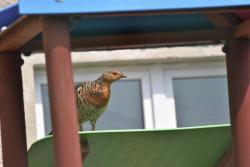 Asset Publisher
Asset Publisher
Polish forests
Poland is in the European lead, while concerning the area of all forests. They cover about 29,2 % of the country territory, and grow within the area of 9,1 million hectares. The overwhelming majority of the forests is state owned, of which almost 7,6 million hectares are managed by the State Forests National Forest Holding..
The number of Polish forest is still growing. The forestation rate of the country has increased from 21 % in 1945 to 29,2 % at the moment. Between 1995 and 2008, the forest area increased by 310 thousand ha. The basis for afforestation works is the "National Programme for Increasing the Forest Cover" (KPZL), assuming an increase of the forestation rate up to 30 % by 2020 and up to 33 % by 2050. Polish forests abound in flora, fauna and fungi. 65 % of the total number of animal species live there.
The forests grow in our country on poor soils, mainly because of the development of the agriculture in previous years. It influences the distribution of the types of the forest sites in Poland. Over 55 % of the forest areas is covered with coniferous forests. In other areas, there are forest sites, mainly the mixed ones. Their small part constitute alder and riparian forests – not more than 3 %.
In the years 1945 – 2011 the area of natural deciduous tree stands within the area of the State Forests National Forest Holding increased from 13 to 28,2 %.
Within the lowlands and uplands the most often occurring tee species is pine. It covers 64,3 % of the forest area of the State Forests National Forest Holding and 57,7 % of private and commune forests. In the mountains the predominant species is European spruce ( in the west) and European spruce with beech (in the east). Domination of pine is the result of carrying on sustainable forest management in the past. Once, the monocultures (crops or cultivations of one species) were the answer to the great demand of industry for wood. Such forests appeared to be quite fragile to climatic factors. They also were often the prey of pests' expansion.
In Polish forests, the share of other tree species, especially deciduous trees have been systematically increasing. The foresters have stepped aside from monocultures – that is why, they try to fit specific species of the forest stand to the natural stand, that would be proper for the given area. Thanks to that, in the years 1945 – 2011, the area of the deciduous tree stands within the lands of the State Forests National Forest Holding increased from 13 to 28,2 %. There occur more and more frequently the following tree species: oaks, ashes, maples, sycamore maples, elms, but also birches, beeches, alders, poplars, hornbeams, aspens, tilias and willows.
Our forests are the most often represented by the forest stands aged 40 to 80 years. The average age of the forest equals 60 years. More and more trees are of big size at the age over 80 years. Since the end of the Second World War, the forests' area has increased up to almost 1,85 million hectares.
Raport o stanie lasów w Polsce 2012
 Asset Publisher
Asset Publisher
CIEKAWSKA GŁUSZKA
CIEKAWSKA GŁUSZKA
Na terenie prywatnych posesji w miejscowości Wymiarki pojawił się w ostatnim czasie osobliwy gość.
Bory Dolnośląskie będące jednym z największych, zwartych kompleksów leśnych Europy stanowią ostoję dla ginącej populacji głuszca (Tetrao urogallus L.). Drastyczny spadek liczebności tego gatunku sprawił, że od roku 1995 ten piękny kurak objęty jest ścisłą ochroną strefową i gatunkową. Widnieje także w Polskiej Czerwonej Księdze Zwierząt jako skrajnie zagrożony oraz jest gatunkiem kwalifikującym do wyznaczania obszarów Europejskiej Ekologicznej Sieci Natura 2000.
Nadleśnictwo Wymiarki było jednym z partnerów projektu związanego z aktywną ochroną nizinnych populacji głuszca, dla którego zakładanym efektem ekologicznym było stworzenie stabilnej populacji tego gatunku w ilości 90-110 osobników na terenie Borów Dolnośląskich. Efekty przedmiotowych działań są od kilku lat widoczne. Przekonali się o tym w ostatnim czasie mieszkańcy miejscowości Wymiarki.
Do leśników docierały sygnały, że w ostatnich dniach na terenie prywatnych posesji położonych w sąsiedztwie lasu pojawia się dość duży i nietypowy ptak. Informacje te szybko zostały potwierdzone. Okazało się bowiem, że owym nietypowym gościem była samica głuszca (głuszka), która poniedziałkowym rankiem postanowiła zwiedzić m.in. zabudowania Szkoły Podstawowej w Wymiarkach.

fot. J. Szczygieł
Żartobliwe komentarze wskazywały, że być może jej zaciekawienie wzbudził nietypowy jak na miesiąc kwiecień spokój spowodowany nauczaniem zdalnym. Po kilku godzinach zwiedzania miejscowości „osobliwa turystka” wróciła do lasu na łono natury.
Uwarunkowania historyczne
Z materiałów archiwalnych wynika, że do 1967 r. głuszce tworzyły w Nadleśnictwie Wymiarki dobrze uformowaną mikropopulację. Tokowało wówczas około 10 – 15 kogutów. Sytuacja ta uległa radykalnej zmianie po pożarze jaki miał miejsce w 1967 r. Żywioł strawił wówczas tokowiska i lęgowiska włącznie z kurami, które wysiadywały jaja. Ponowną obecność głuszca na tych terenach zaobserwowano dopiero 19 kwietnia 1975 r., czyli po blisko 8 latach od pożaru. Miejsca bytowania głuszca objęto szczególnym nadzorem.
Badania naukowe prowadzone na terenie Nadleśnictwa Wymiarki przez Akademię Rolniczą z Poznania w latach 1986 – 1990 dotyczące ekologii głuszca wskazywały, że w roku 1986 przebywał na terenie tej jednostki tylko jeden głuszec! Natomiast w latach 1987 – 1990 stwierdzono zanik populacji na tym terenie. Jedną z głównych przyczyn takiego stanu rzeczy upatrywano w znaczącym zwiększeniu się populacji kruka, lisa oraz ptaków drapieżnych.
Tym bardziej cieszy fakt, że podjęte działania na rzecz odbudowy opisywanego gatunku przynoszą wymierne efekty.
Pozostaje mieć nadzieję, że słynna czterozwrotkowa pieśń odgrywana przez samce głuszca coraz częściej będzie rozbrzmiewać w polskich lasach, a słowa Włodzimierza Korsaka mówiące, że „jeżeli toki cietrzewie dają miłośnikowi przyrody mnóstwo nadzwyczaj silnych, a miłych wrażeń, to na tokach głuszcowych czciciel piękna natury znajduje raj prawdziwy” nadal będą znajdywały spełnienie.
Autor Jarosław Karwański


 fot. Paweł Fabijański
fot. Paweł Fabijański
 fot. Paweł Fabijański
fot. Paweł Fabijański
 fot. Paweł Fabijański
fot. Paweł Fabijański

 fot. J.Kazimir
fot. J.Kazimir
 fot. J.Kazimir
fot. J.Kazimir



